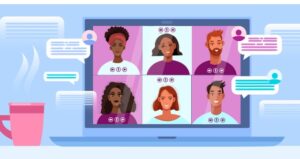15 Ways to Engage Your Students In-person, Online, and in Zoom
In January 2022, Nova Southeastern University (NSU) resumed its classes in their regularly scheduled formats including in-person, hybrid, and online. However, we were encouraged to

In January 2022, Nova Southeastern University (NSU) resumed its classes in their regularly scheduled formats including in-person, hybrid, and online. However, we were encouraged to

Principle #1: Build community to foster engagement online A sense of community fosters a sense of belongingness and is critical to student engagement. Building a

One of the most intriguing, and perhaps intimidating, aspects of walking into a class for the first time and introducing yourself is deciding who you

For baseball fans and players, springtime can only mean one thing: spring training. Every year professional baseball players head to Arizona or Florida to hone their craft. These are professionals mind you, but they continue to spend hours each year working on many of the same things Little Leaguers work on during the start of their seasons—throwing, catching, hitting, base running, and so forth.
As they make minor adjustments in these fundamentals of the game, the overall outcome is a major improvement. The same is true for faculty who remain mindful of their fundamentals, and make small, incremental improvements to their teaching.
I dread the moments when I look out into a classroom and see a collection of blank stares or thumbs clicking on tiny keypads: a pool of disengaged students, despite what I thought was a student-centered activity. Recently, I have been considering how teachers (me specifically) undermine our own efforts to engage students.

When I started teaching 27 years ago, like the scarecrow in The Wizard of Oz I believed that just having a brain would make me successful. And so each class session I would literally “take the stage” on a raised platform to deliver what was in my head and on my papers. Even though there were 60 students in the class, there could just as well have been none because I basically ignored the students. They were objects, sponges whose task was to absorb course content.
Sometimes a teachable moment occurs when a student is stuck, other times it’s when a topic has sparked her interest. In an email interview, Eric Frierson, an instructional technology librarian at the University of Texas–Arlington, shares strategies for online instructors to capitalize on both types of teachable moments.
Some students are reluctant to enroll in online courses, afraid they will miss some of the social aspects of the face-to-face classroom. For these students, it makes sense to incorporate online synchronous sessions to provide some of the benefits of the face-to-face class while maintaining most of the flexibility of an asynchronous online course.
Dr. Peter M. Saunders, director of Oregon State University’s Center for Teaching and Learning, has heard the horror stories, and understands why faculty were hesitant to use clickers in the early years.
Last week, while teaching Dante’s Inferno, I moderated a lively two-day class discussion about medieval and modern values and religion. How did Dante define virtue? How do we define it? For Dante, why was lust not as terrible a sin as theft of property? Why did his age consider gluttony a moral failing rather than a self-destructive behavior that one can take to Jenny Craig?
Get exclusive access to programs, reports, podcast episodes, articles, and more!